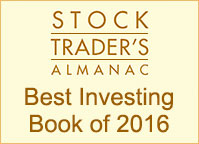
Jan 26, 2025 | AAPL, BA, Breaking News, Jubak Picks Portfolio, MSFT, T, Top 50 Portfolio, XOM
This page is for Subscribers.
We’ll share all of our Posts and our Live Public Portfolios with you!
Sign Up for a subscription and you can view everything on the Juggling With Knives website. (If you’ve purchased the book, you’ve earned a free subscription. Use the Coupon Code in the book to start your one-year FREE subscription).
Plus, you’ll get Jim’s Volatility Email Update each evening at 8:00pm.


Oct 23, 2023 | AMZN, Breaking News, Dividend Income Portfolio, GOOG, Jubak Picks Portfolio, KO, MSFT, Top 50 Portfolio, XOM
This page is for Subscribers.
We’ll share all of our Posts and our Live Public Portfolios with you!
Sign Up for a subscription and you can view everything on the Juggling With Knives website. (If you’ve purchased the book, you’ve earned a free subscription. Use the Coupon Code in the book to start your one-year FREE subscription).
Plus, you’ll get Jim’s Volatility Email Update each evening at 8:00pm.


Jan 15, 2021 | Breaking News, XOM
This page is for Subscribers.
We’ll share all of our Posts and our Live Public Portfolios with you!
Sign Up for a subscription and you can view everything on the Juggling With Knives website. (If you’ve purchased the book, you’ve earned a free subscription. Use the Coupon Code in the book to start your one-year FREE subscription).
Plus, you’ll get Jim’s Volatility Email Update each evening at 8:00pm.


Aug 22, 2019 | Breaking News, Stocks, XOM
This page is for Subscribers.
We’ll share all of our Posts and our Live Public Portfolios with you!
Sign Up for a subscription and you can view everything on the Juggling With Knives website. (If you’ve purchased the book, you’ve earned a free subscription. Use the Coupon Code in the book to start your one-year FREE subscription).
Plus, you’ll get Jim’s Volatility Email Update each evening at 8:00pm.


Mar 20, 2019 | Breaking News, Dividend Income Portfolio, Sell, Stocks, XOM
This page is for Subscribers.
We’ll share all of our Posts and our Live Public Portfolios with you!
Sign Up for a subscription and you can view everything on the Juggling With Knives website. (If you’ve purchased the book, you’ve earned a free subscription. Use the Coupon Code in the book to start your one-year FREE subscription).
Plus, you’ll get Jim’s Volatility Email Update each evening at 8:00pm.


Feb 20, 2017 | Breaking News, Sell, Top 50 Portfolio, XOM
This page is for Subscribers.
We’ll share all of our Posts and our Live Public Portfolios with you!
Sign Up for a subscription and you can view everything on the Juggling With Knives website. (If you’ve purchased the book, you’ve earned a free subscription. Use the Coupon Code in the book to start your one-year FREE subscription).
Plus, you’ll get Jim’s Volatility Email Update each evening at 8:00pm.












